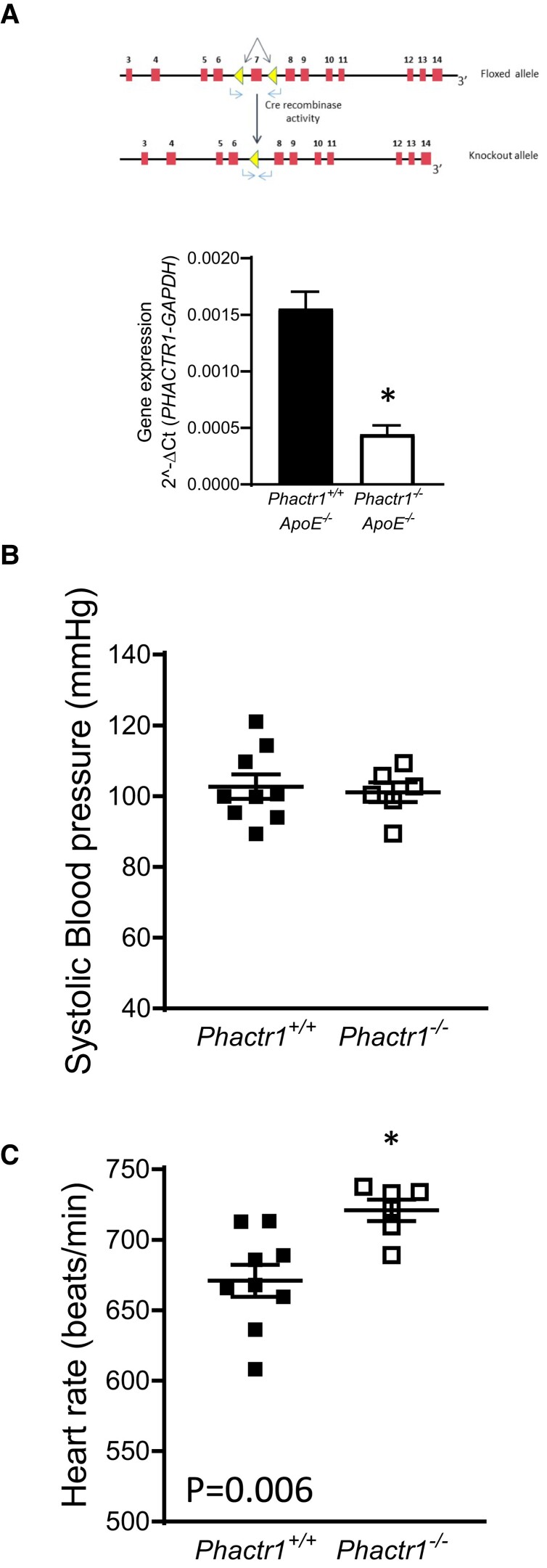Figure 5.
Loss of Phactr1 causes a significant increase in heart rate. (A) Schematic showing the targeting of the murine Phactr1 locus with loxP sites flanking Exon 7, mRNA analysis showing a significant reduction in Phactr1 expression in hearts from Phactr1−/−ApoE−/− mice (P < 0.05, T-Test, adult males, n = 4 Phactr1+/+ApoE−/− and n = 5 Phactr1+/+ApoE−/−). (B) Systolic blood pressure was not significantly different between groups (P > 0.05, T-test). (C) A significant increase in heart rate was observed in Phactr1−/−ApoE−/− mice compared with their Phactr1+/+ApoE−/− control littermates (P < 0.05, T-test). Adult mice between 20 and 22 weeks of age, n = 4 female and 5 male Phactr1+/+ApoE−/− and 3 female and 3 male Phactr1−/−ApoE−/− mice. Data are expressed as the mean ± SEM, each point represents an individual animal. Black bars/symbols = Phactr1+/+, white bars/symbols = Phactr1−/−.

